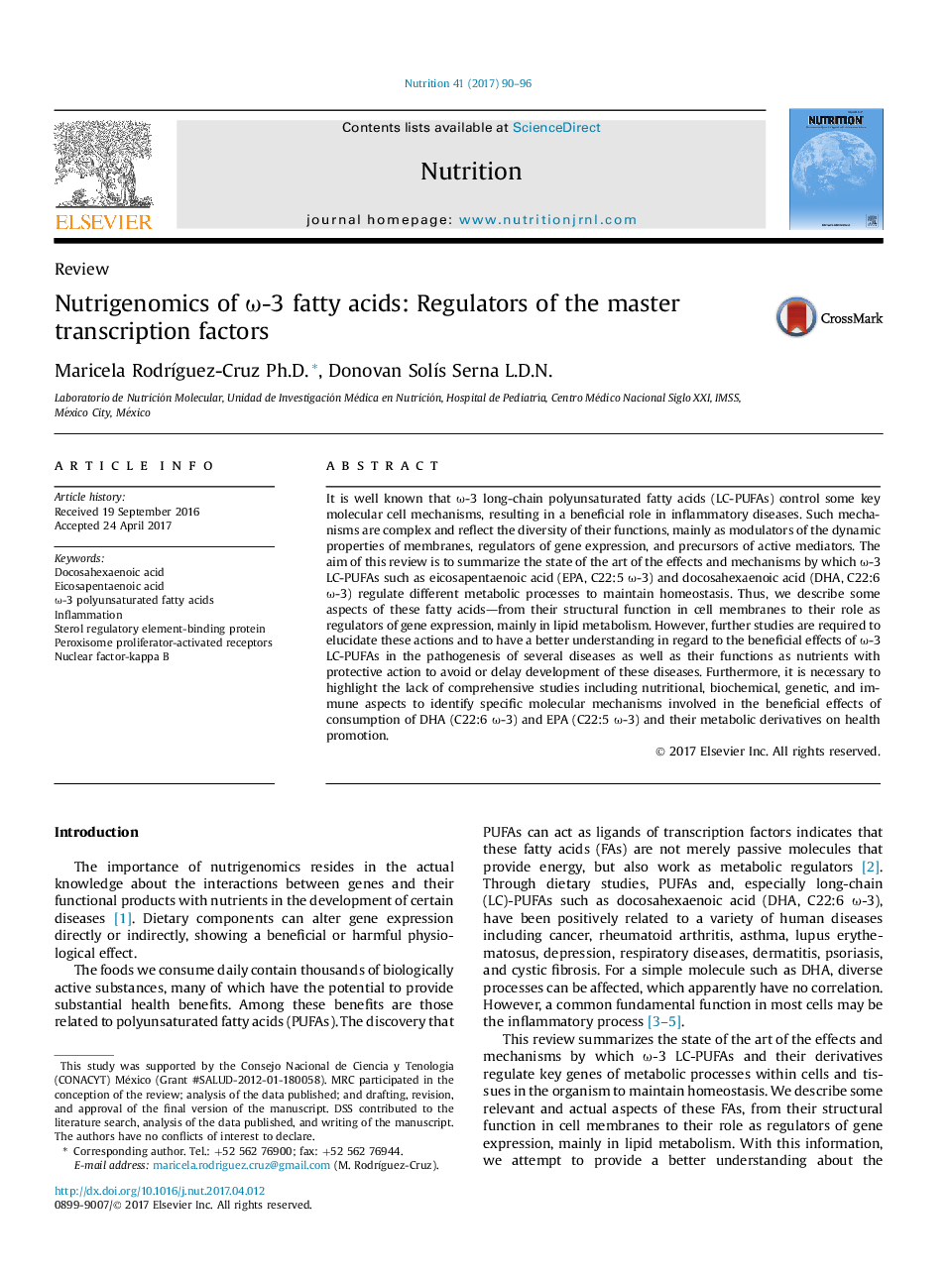| Article ID | Journal | Published Year | Pages | File Type |
|---|---|---|---|---|
| 5656832 | Nutrition | 2017 | 7 Pages |
â¢Ï-3 fatty acids (O3 FAs) work as metabolic regulators.â¢O3 FAs modulate signal transduction throughout the cell membranes.â¢O3 FAs control the expression of master transcriptional factors.â¢NF-κB, SREBP, PPARs, and ChREBP are master transcriptional factors regulated by O3 FA.â¢NF-κB regulates gene transcription of proteins involved in inflammation.
It is well known that Ï-3 long-chain polyunsaturated fatty acids (LC-PUFAs) control some key molecular cell mechanisms, resulting in a beneficial role in inflammatory diseases. Such mechanisms are complex and reflect the diversity of their functions, mainly as modulators of the dynamic properties of membranes, regulators of gene expression, and precursors of active mediators. The aim of this review is to summarize the state of the art of the effects and mechanisms by which Ï-3 LC-PUFAs such as eicosapentaenoic acid (EPA, C22:5 Ï-3) and docosahexaenoic acid (DHA, C22:6 Ï-3) regulate different metabolic processes to maintain homeostasis. Thus, we describe some aspects of these fatty acids-from their structural function in cell membranes to their role as regulators of gene expression, mainly in lipid metabolism. However, further studies are required to elucidate these actions and to have a better understanding in regard to the beneficial effects of Ï-3 LC-PUFAs in the pathogenesis of several diseases as well as their functions as nutrients with protective action to avoid or delay development of these diseases. Furthermore, it is necessary to highlight the lack of comprehensive studies including nutritional, biochemical, genetic, and immune aspects to identify specific molecular mechanisms involved in the beneficial effects of consumption of DHA (C22:6 Ï-3) and EPA (C22:5 Ï-3) and their metabolic derivatives on health promotion.
